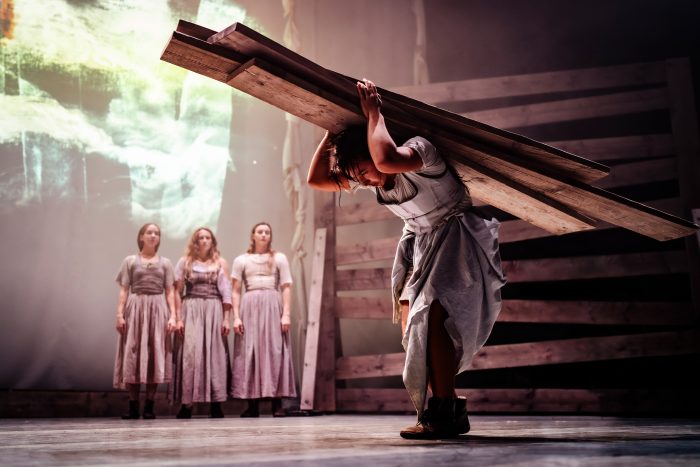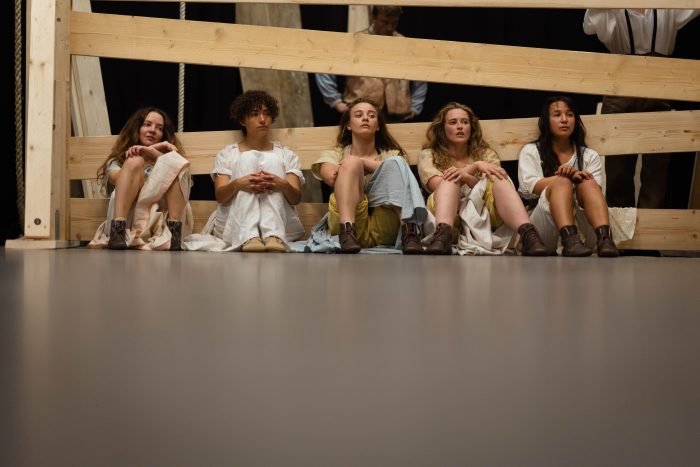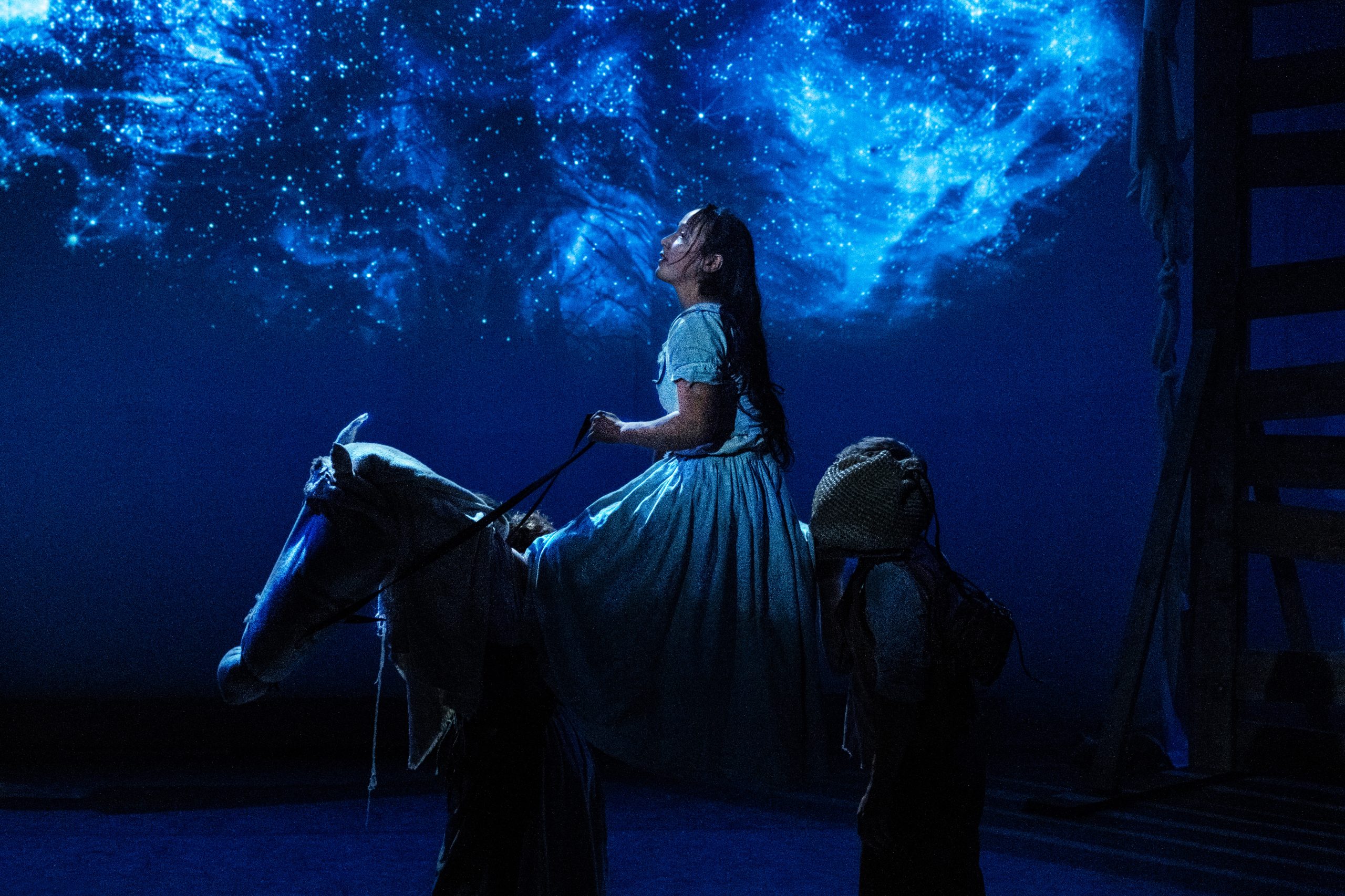First published in weekly parts in a newspaper and censored by its editor for its offensive content, Thomas Hardy’s Tess of the d’Urbervilles is no stranger to being tinkered with.
This version, directed by Charlotte Mooney and Alex Harvey of curriculum text-stage adaptation group Ockham’s Razor, contributes to the extensive history of this messy 1891 text.
Refreshingly telling the story from the lead character’s own perspective (and, impressively, the only actor on stage) Tess Durbeyfield is played by Hanora Kamen, who can do a pretty good Dorset accent. The choice to have only one actor speaking for the whole play was refreshing. Rather than a multitude of characters and voices the focus was on movement. Intertwined with Kamen’s coming and going narration are the cast of six dancers/acrobats, who provide a lot of the visual entertainment and storytelling. Tess’s dance double is played by Lila Naruse, the swarthy Alec D’Urberville by Joshua Frazer, and good boy Angel Clare by Nat Whittingham.
Collectively, with the rest of the multi-role ensemble cast (Lauren Jamieson, Victoria Skillen and Shannon Kate Platt), we see them cleverly use wooden planks to create engaging acrobatics. This fit Hardy’s novel, with its rolling Dorset setting and natural imagery, and with the dancers’ own fluid and hypnotic movements. These movements were a technical spectacle; delicately orchestrated and immaculately timed. All actors, moving as one, made every movement look effortless (although it clearly took a lot of strength).

The lighting design was also carefully planned and aided the plot. A bright spotlight was used throughout to highlight the focal character. Lights were often dimmed and always used gently, even when a dramatic moment happened. Coloured gels were added to signify emotion rather than snappy changes and fast-paced action.
Moments of comedy (i.e. the cows) were cleverly constructed, and the show was a chance to simply observe and enjoy the performers’ sheer strength and dynamism (shoulder climbs, balancing acts, and metal hoop dancing).
However, some transitions dragged, along with music which, though it had interesting character motifs, could have been knocked down a notch or two at points. Although it was a stylistic choice to have only one narrator, it did mean there were long stretches with no voices; at points this made the movement scenes blur into one and as an audience member you slightly switched off.
Given that its source text is a pretty dense Victorian novel though, it did a good job of keeping the audience engaged.
There were a fair few alterations made from the novel to fit this unique format. However, some memorable plot points could have made striking visuals and provided another layer of depth. Perhaps obviously, the wooden planks could have become trunks of trees and, silhouetted, could have made a climactic Stonehenge for the memorable final scene. Other materials, such as metal sheets, cogs, or wire could have provided contrast. Hardy’s story is not just about nature, it’s about rigid machines, the Industrial Revolution, and shrinking rural communities; broader themes that would have been interesting if utilised with the cast’s skillset to help tell the story of Tess.

For a unique, circus act, wooden-plank-filled performance, Tess is currently on show at York Theatre Royal until Saturday 11th May 2024.
